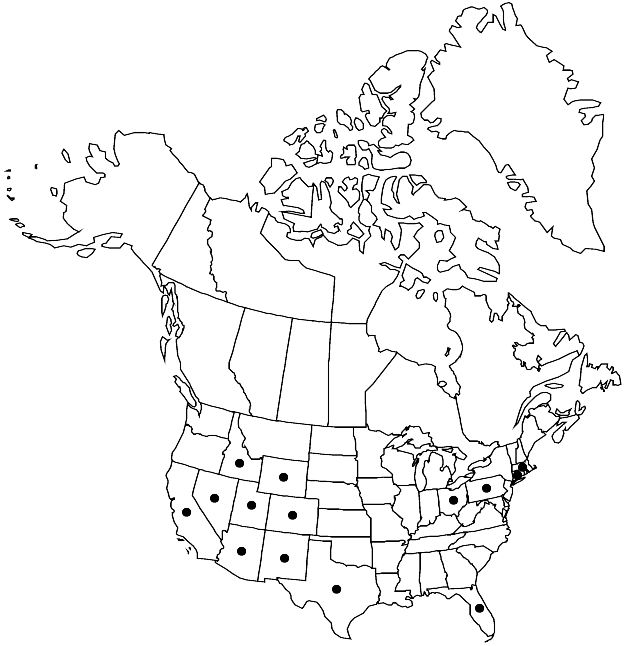Sisymbrium irio
Sp. Pl. 2: 659. 1753.
Annuals; glabrous or sparsely pubescent. Stems erect, branched proximally and distally, (1–) 2–6 (–7.5) dm, glabrous or sparsely pubescent at least basally. Basal leaves not rosulate; petiole (0.5–) 1–4.5 (–6) cm; blade oblanceolate or oblong (in outline), (1.5–) 3–12 (–15) cm × (5–) 10–60 (–90) mm, margins runcinate to pinnatisect; lobes (1–) 2–6 (–8) on each side, oblong or lanceolate, smaller than terminal lobe, margins entire, dentate, or lobed. Cauline leaves similar to basal; (distalmost) blade (smaller, to 2 cm wide), margins entire or 1–3-lobed. Fruiting pedicels divaricate or ascending, slender, much narrower than fruit, (5–) 7–12 (–20) mm. Flowers: sepals erect, oblong, 2–2.5 × 1–1.5 mm; petals oblong-oblanceolate, 2.5–3.5 (–4) × 1–1.5 mm, claw 1–1.5 mm; filaments 2.5–4 mm; anthers ovate, 0.5–0.9 mm. Fruits (divaricate to ascending, young fruits overtopping flowers), narrowly linear, straight or slightly curved inward, slightly torulose, slender, (2.5–) 3–4 (–5) cm × 0.9–1.1 mm; valves glabrous; ovules 40–90 per ovary; style 0.2–0.5 mm; stigma prominently 2-lobed. Seeds 0.8–1 × 0.5–0.6 mm. 2n = 14.
Phenology: Flowering Dec–May.
Habitat: Rocky slopes, orchards, roadsides, fields, pastures, waste grounds, prairies, disturbed sites
Elevation: 0-1700 m
Distribution

Introduced; Ariz., Calif., Colo., Conn., Fla., Idaho, Mass., Mich., Nev., N.Mex., Ohio, Pa., Tex., Utah, Wyo., Europe, w, c Asia, n Africa, also in South America, Australia
Discussion
Selected References
None.
Lower Taxa
"elongated" is not a number."elongated" is not a number."thick" is not a number."dm" is not declared as a valid unit of measurement for this property."dm" is not declared as a valid unit of measurement for this property.